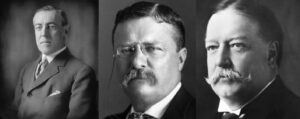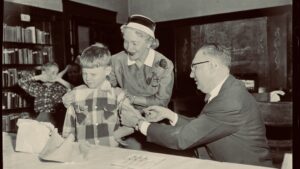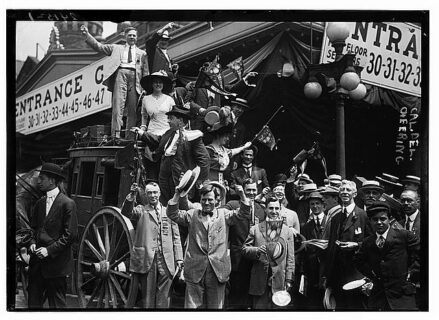
A Tale of 2 or 3 Progressivisms

This month we’re featuring a new online exhibit at TAH.org: The Presidential Election of 1912. It is curated by Professor Jason Jividen (who also edited our Core Document Collection, Populists and Progressives.) Jividen is Associate Professor of Politics at Saint Vincent College and a faculty member for TAH and the Master of Arts in American History and Government program.
Woodrow Wilson’s sweeping Electoral College victory in 1912 might be seen as the result of a split in the Republican Party triggered by a bitter personal rivalry between former President Theodore Roosevelt and his former vice president, incumbent president William Howard Taft. Professor Jividen, however, sees the election as a contest between competing versions of the progressive impulse that dominated the era. Ultimately, Jividen argues, the election of 1912 ushered in a new understanding of the relationship between American citizens and their government.
Why did you want to put together an exhibit on the election of 1912?
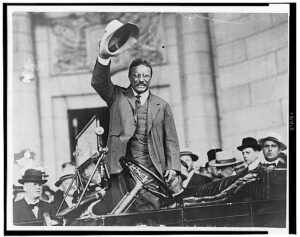
When I teach the Progressive Era course in the MAHG, I spend only one class session on the 1912 election, and the teachers always bring to it more questions and insights than we have time to explore. Teachers know that this election was the first and only time in our history when a third-party candidate significantly affected the electoral outcome. Some of us remember Ross Perot in 1992, who won almost 19% of the popular vote, but Teddy Roosevelt in 1912 won over 27%. The sheer force of his personality, his popularity, and the needs of this particular moment in history made him a formidable contender.
What most interests me are the political arguments made in the campaign speeches and editorials of the time. The Progressive movement cut across parties; all the major parties in 1912 claimed to be progressive. In their writings, the candidates combine powerful rhetoric with political theory. It was one of those rare times—the Civil War is another—when you really do see very serious philosophical ideas being debated in the public square.
If all the major candidates claimed to be progressive, how did they distinguish their positions?
With regard to policy goals, such as the regulation of monopolies, workers’ protection, restrictions on women’s and child labor, you see quite a bit of agreement across the platforms. But candidates differ on how to achieve these ends.
A rift between the conservative and progressive elements of the Republican Party had emerged by 1910, when Roosevelt gave his “New Nationalism” address in Osawatomie, Kansas. He tried to state a position the whole party could agree on, but he failed. The disagreement widened over the tariff. The more conservative wing of the party was protectionist at this time, and although Taft promised a significant tariff reduction, he couldn’t push it through Congress. But the disagreement between Taft and Roosevelt goes much deeper.
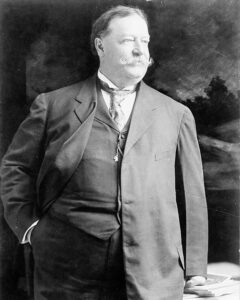
Both Roosevelt and Taft wanted things like child labor laws, a reduction in the workday, and enforceable safety standards in the workplace. But Taft disapproved of the means Roosevelt would employ. Roosevelt calls for more direct democracy: initiative, referendum, recall of elected officials and even of controversial judicial decisions. Taft wants to slow down and pursue reforms through the established constitutional means, but Roosevelt and the Progressive Party cry, “full speed ahead! If the Constitution gets in the way, we’ll find ways to deal with that.”
Eugene Debs, the perennial socialist candidate, goes even further than Roosevelt. He talks about abolishing the Senate and abolishing the Electoral College, among other radical reforms. However extreme Roosevelt seems, he’s no Debs.
What about Wilson? How does his position differ from that of Roosevelt and the new “Bull Moose” Progressive Party?
The Progressive Party offers a much more full-throated embrace of the administrative and regulatory powers of government. Wilson is a progressive academic; he’s promoted these ideas. But he is housed in a Democratic Party that is still very much claiming to be the party of Jefferson and Jackson. In Wilson you see a progressive trying to speak the language of decentralization, states’ rights and individualism, while arguing for some decidedly progressive policies. In some of his campaign addresses, he says the history of government is really the history of the limitations on government. That just doesn’t sound like the Woodrow Wilson we know, right? But it does sound like the party of Jackson or Jefferson.
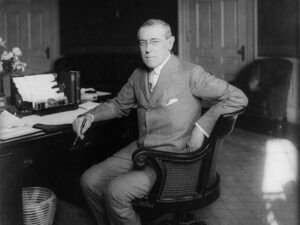
Once elected, Wilson arguably reverts to his actual views. His “New Freedom,” and the way that he actually governs, look a lot like Roosevelt’s “New Nationalism.” He pushes through tariff reform, the Clayton Anti-Trust Act, the Federal Trade Commission Act, and the Federal Reserve Act.
You’re seeing a Democratic party that’s changing. Wilson is succeeded by a series of Republican presidents, until the Depression hits and Franklin Roosevelt is elected. The New Deal, you might say, embodies what Wilson was really thinking. Among other things, Franklin Roosevelt’s focus on executive opinion leadership looks like the academic Wilson’s idea of the presidency.
If Progressivism reemerges with the New Deal, why do historians call the 1912 election the high watermark of Progressivism? Doesn’t Progressivism shape politics for the rest of the century?
I agree. The Progressive Party disappeared in the 1920s, with most Party members drifting back into the progressive wings of the two major political parties. But as an intellectual and political movement, Progressivism never went away. FDR’s New Deal and Lyndon Johnson’s Great Society revive and redefine progressivism. And in recent years, folks who once would have identified themselves as liberal Democrats—Hillary Clinton and Barack Obama, for example—have referred to themselves as progressives.
In 1912, was Wilson able to win because he appeared more moderate than Teddy Roosevelt?
I’m not enough of an electoral historian to know. Wilson won only about 42% of the popular vote, but in the Electoral College, it’s an overwhelming Wilson victory. In the exhibit we’ve posted an electoral map and charts that show how the votes sorted out by state. In part, Wilson wins because of the strength of the Democratic Party in the South and elsewhere. But if you add the popular vote total for Roosevelt to that of Taft, you get just under 51%. Did Wilson win because Roosevelt siphoned off so much of the vote from Taft? It’s hard to see Taft winning—he was awfully unpopular at the time because of the tariff. If Roosevelt had been the Republican nominee, who would have won? I think a lot of people would have had trouble finding the daylight between Wilson’s New Freedom and Roosevelt’s New Nationalism.
We might also wonder whether Eugene Debs would have won more than 6% of the popular vote total if not for Roosevelt. As Sidney Milkis (Professor of Politics at the University of Virginia) says, we’ve never had a viable national Socialist Party. But if ever there were an election that gave socialists a good chance, it was that of 1912, when many Americans were angry about working conditions, concentrations of capital, and collusion among industrialists. Milkis argues that Roosevelt’s new Progressive Party gave voters a more moderate option, perhaps siphoning off voters Debs might have won. Voters might have been uncomfortable with Debs’ plan for nationalizing the railroads and other industries, but they could get on board with the popular former president’s less extreme plans to restrain industrial monopolies.
In MAHG, I spend some time asking teachers how they explain to their students the election’s result and the differences between the parties.
How do teachers understand and explain the 1912 election?
Many of them have not taught progressive political theory so much as the Progressives’ practical response to social problems. They especially emphasize the constitutional amendments: the income tax, direct election of senators, prohibition, and women’s suffrage.. They often think of progressivism as a necessary stage of historical development—it brought reforms that for the most part improved the lives of citizens. They tend to situate the 1912 election in that broader context. I always say, however, that these reforms often came with trade-offs. The Progressives’ ideas about the purposes of government are pretty far-reaching.
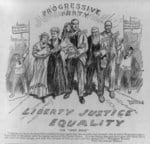
Teachers do point out a blind spot among the Progressives—their ambivalence or indifference with regard to racial justice. Today, there are ideas that we call “progressive” that weren’t shared by the original Progressives. The original Progressives were actually rather ambivalent about rights language. For them, individual rights (like property rights) often seemed to get in the way of progressive economic reform. This changes later in the modern liberalism of the New Deal, which focused more overtly on economic rights or entitlements guaranteed by government. By the 1960s, modern liberalism would eventually place more emphasis on civil rights reform. Ultimately, our history since the turn of the twentieth century might be a tale of two or three progressivisms.
Among the documents you curated for this exhibit, which would be most helpful to a teacher with limited time?
I’d say, read the letters of the candidates as they accept their nominations. Roosevelt’s “Confession of Faith” defends his vision. Taft’s acceptance letter explains his differences with the Republicans who have defected to Roosevelt’s new party. Wilson’s acceptance letter tries to walk that fine line between being a Progressive and a traditional Democrat. And Debs’ “Political Appeal to American Workers” pushes his more radical views. These letters of acceptance comment in some detail on the party platforms, giving you a richer discussion of the issues.

